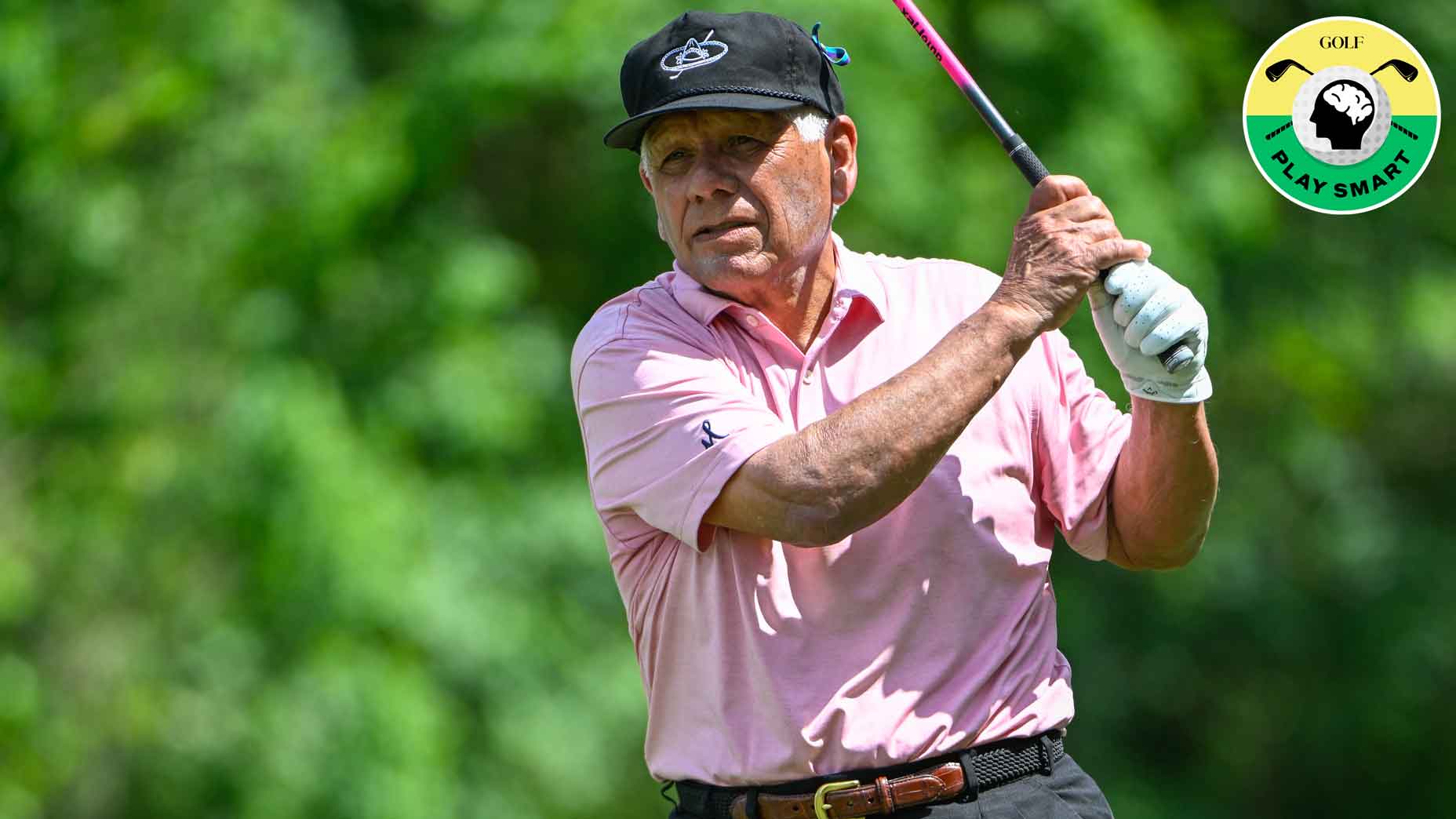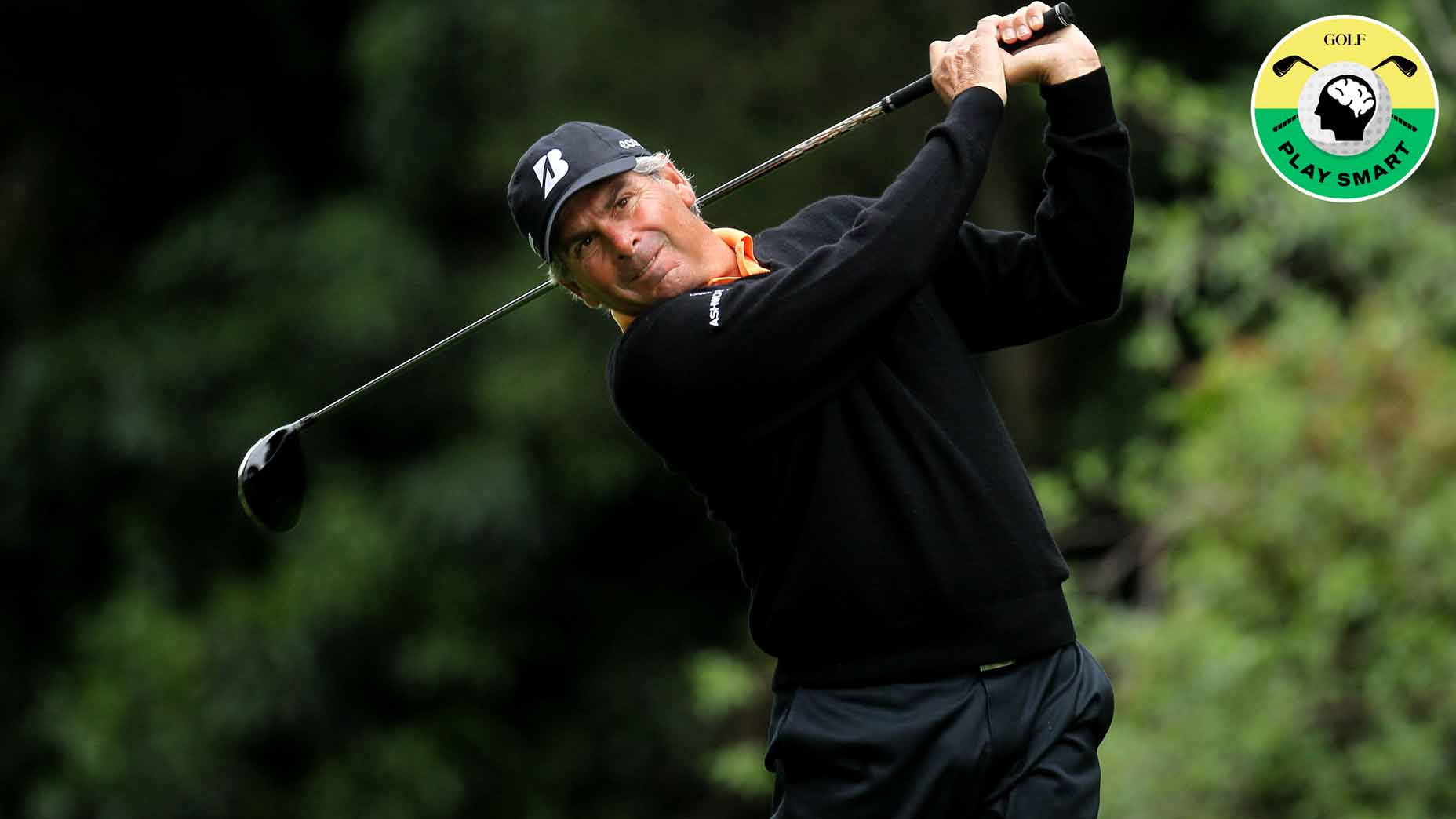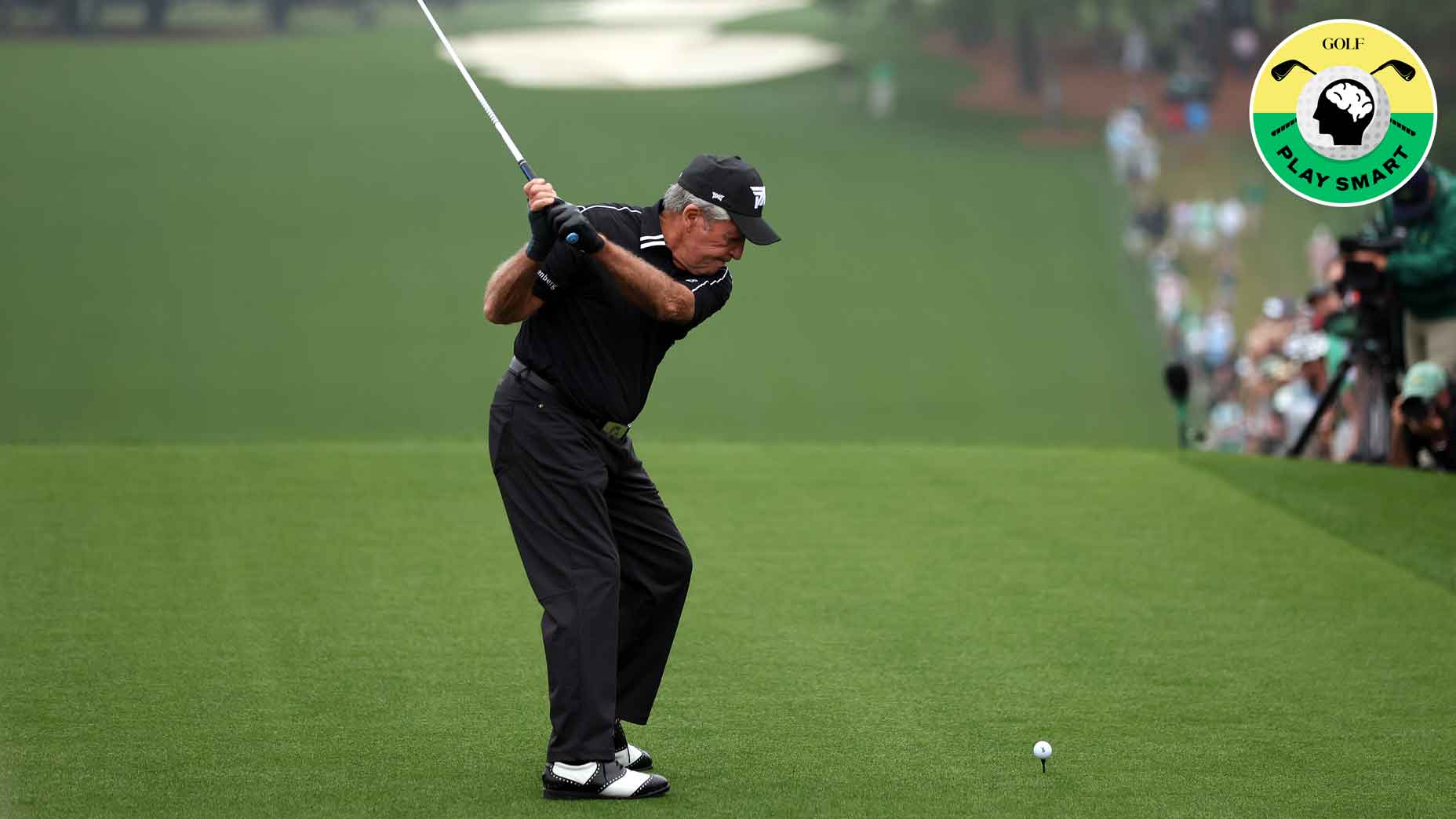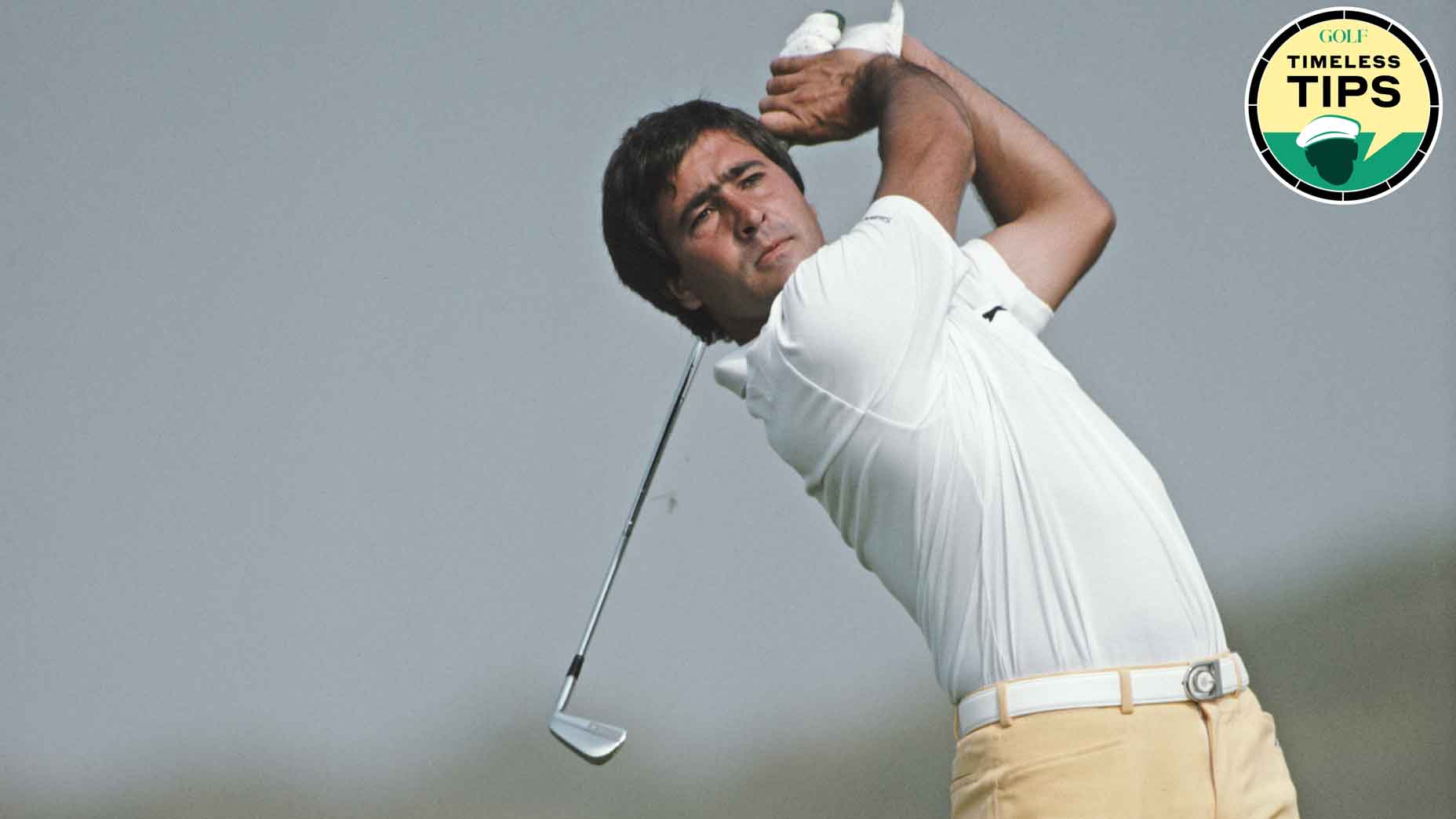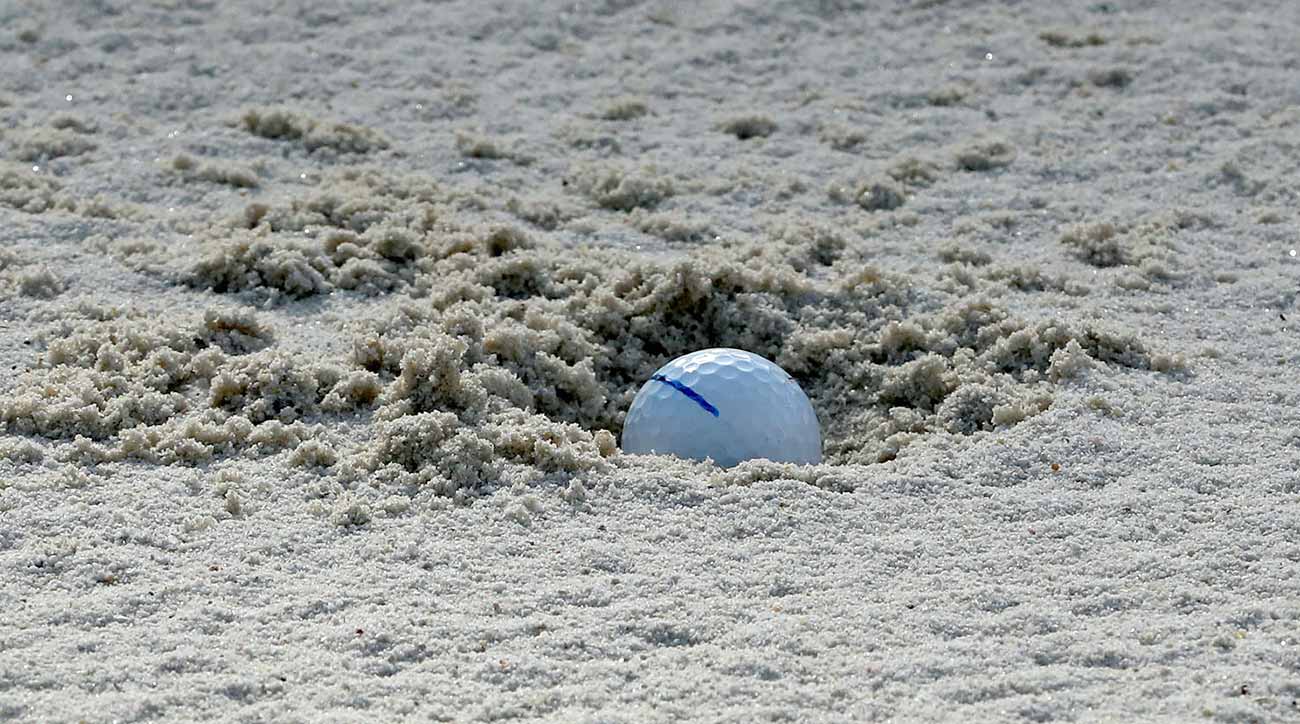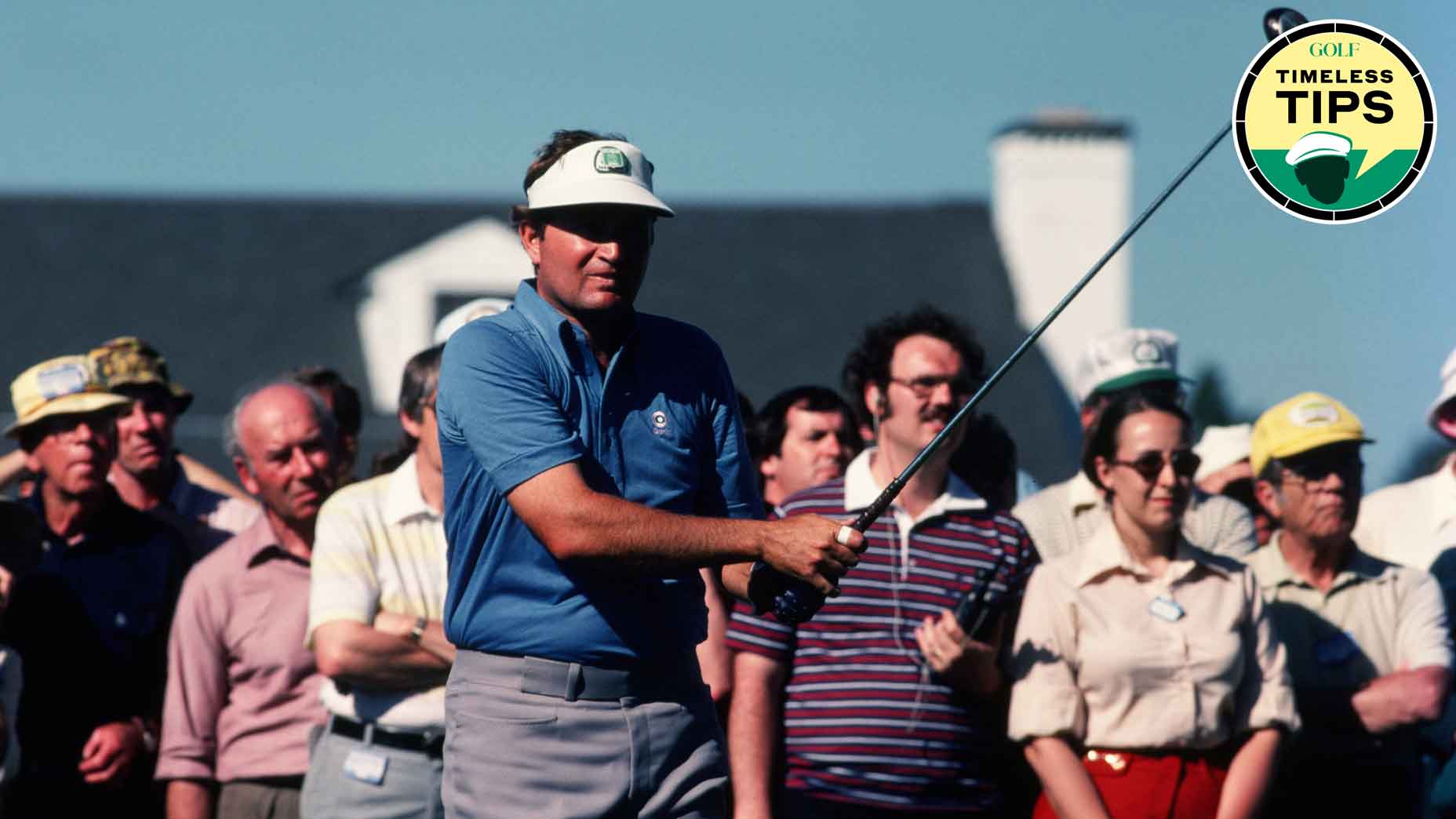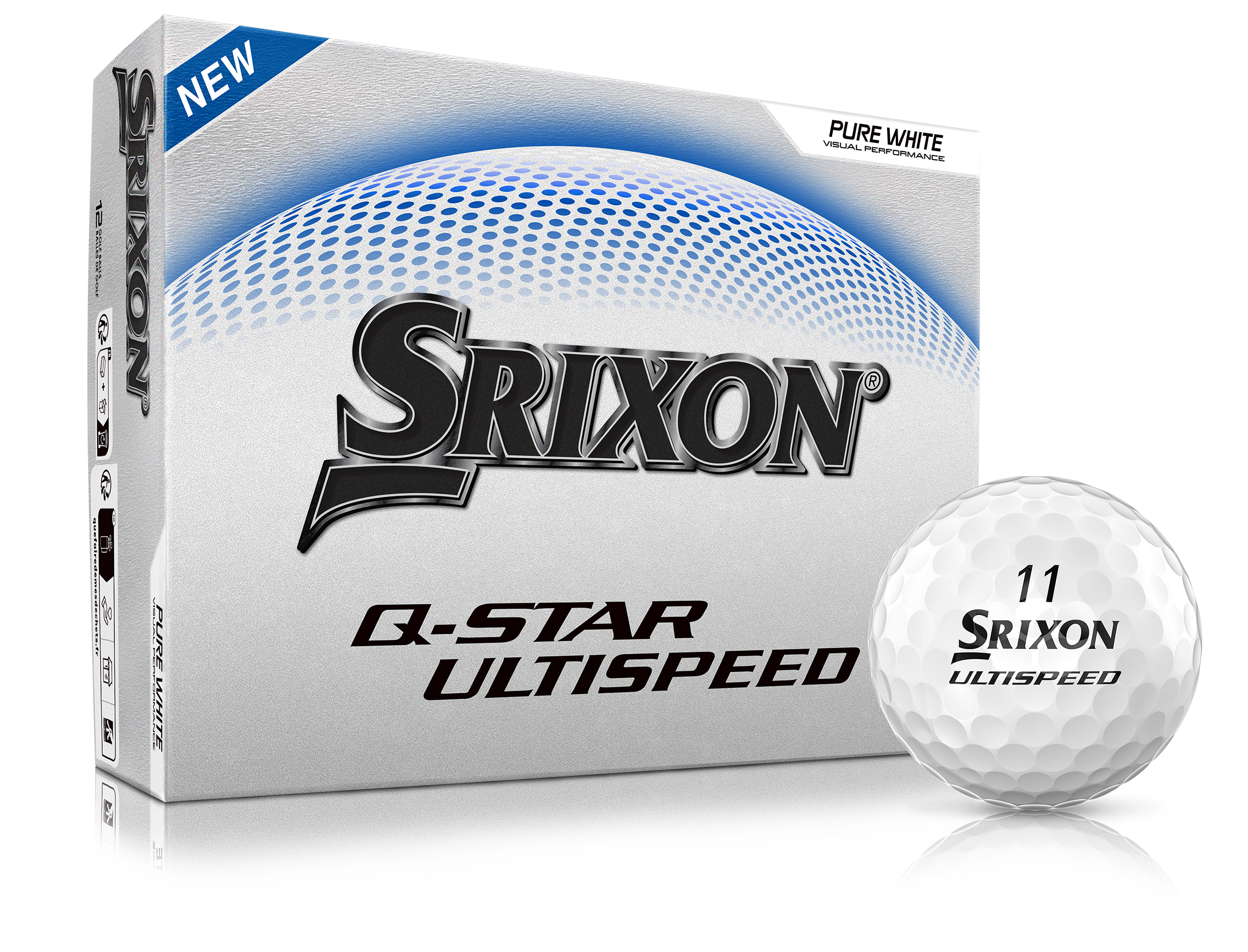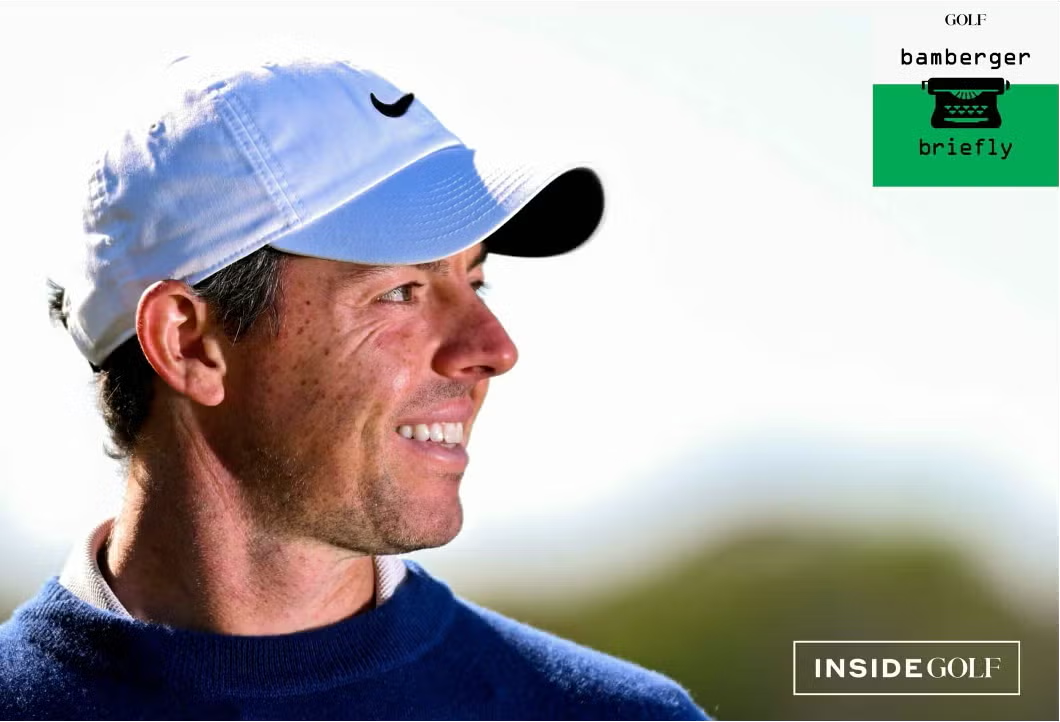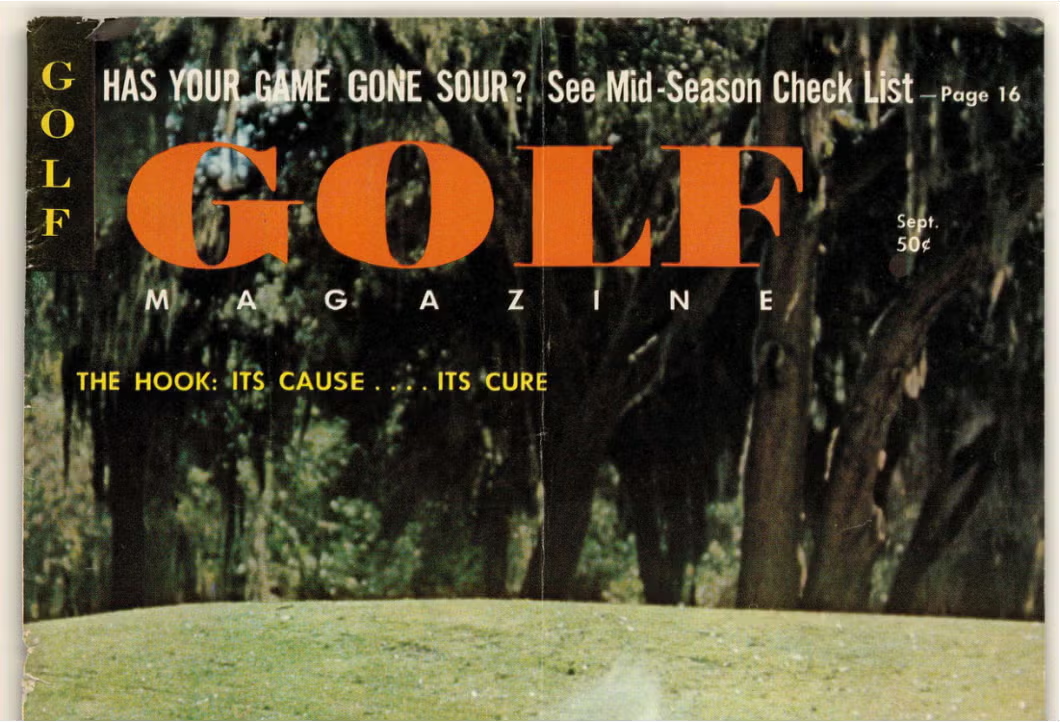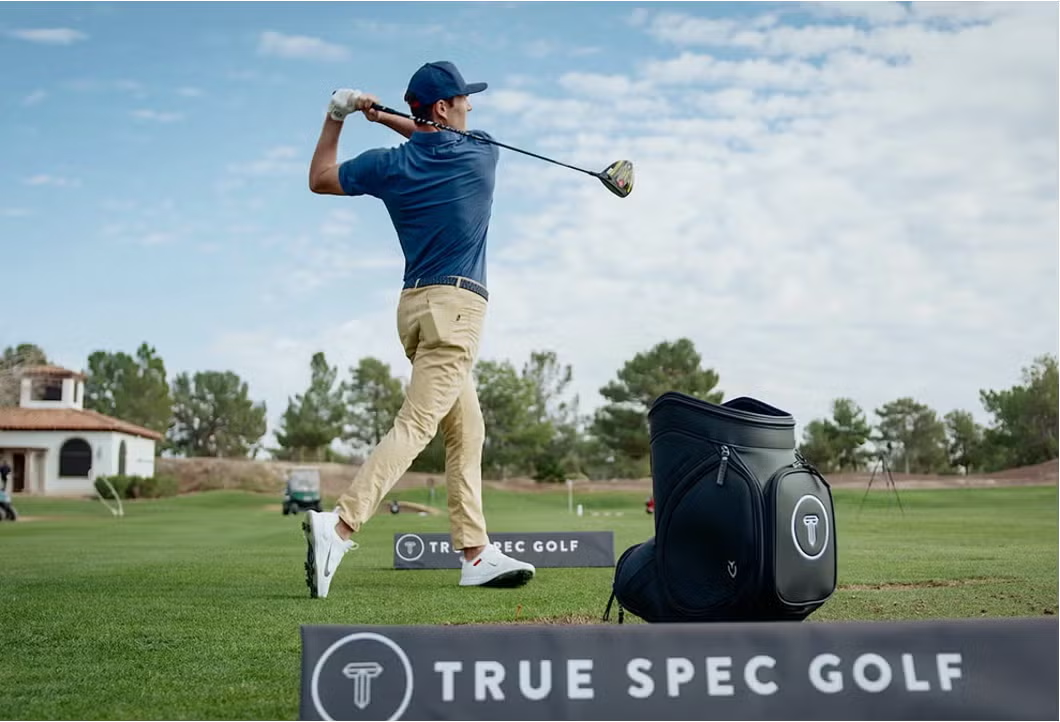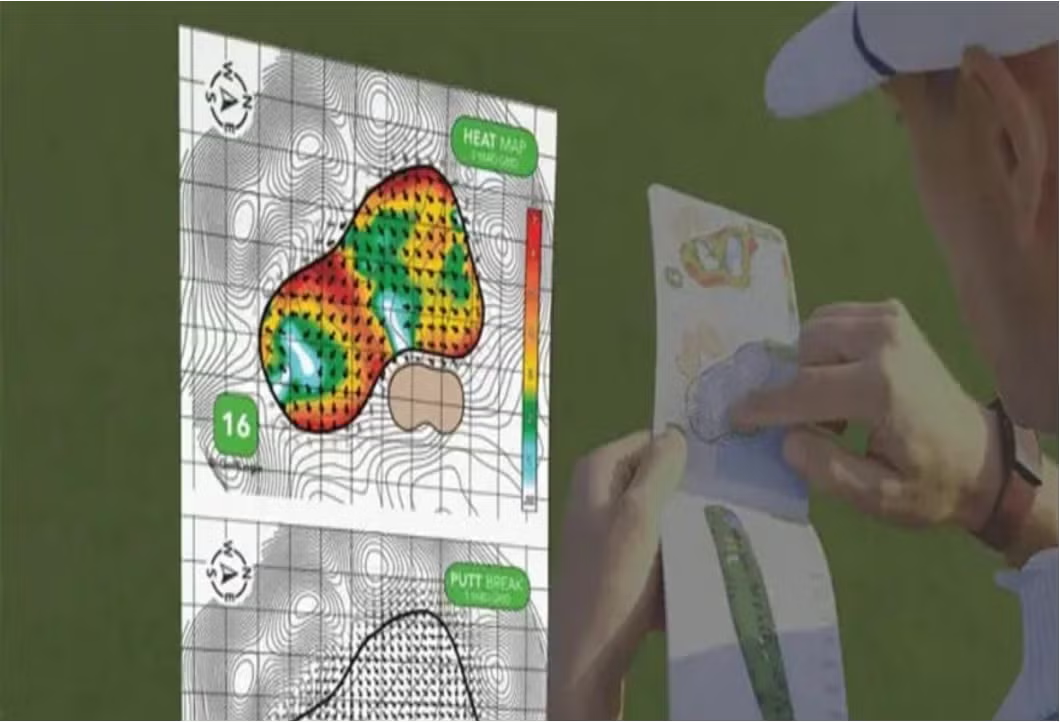Make sure your golf game ages gracefully with the help of a 3-time major champ
- Share on Facebook
- Share on Twitter
- Share by Email
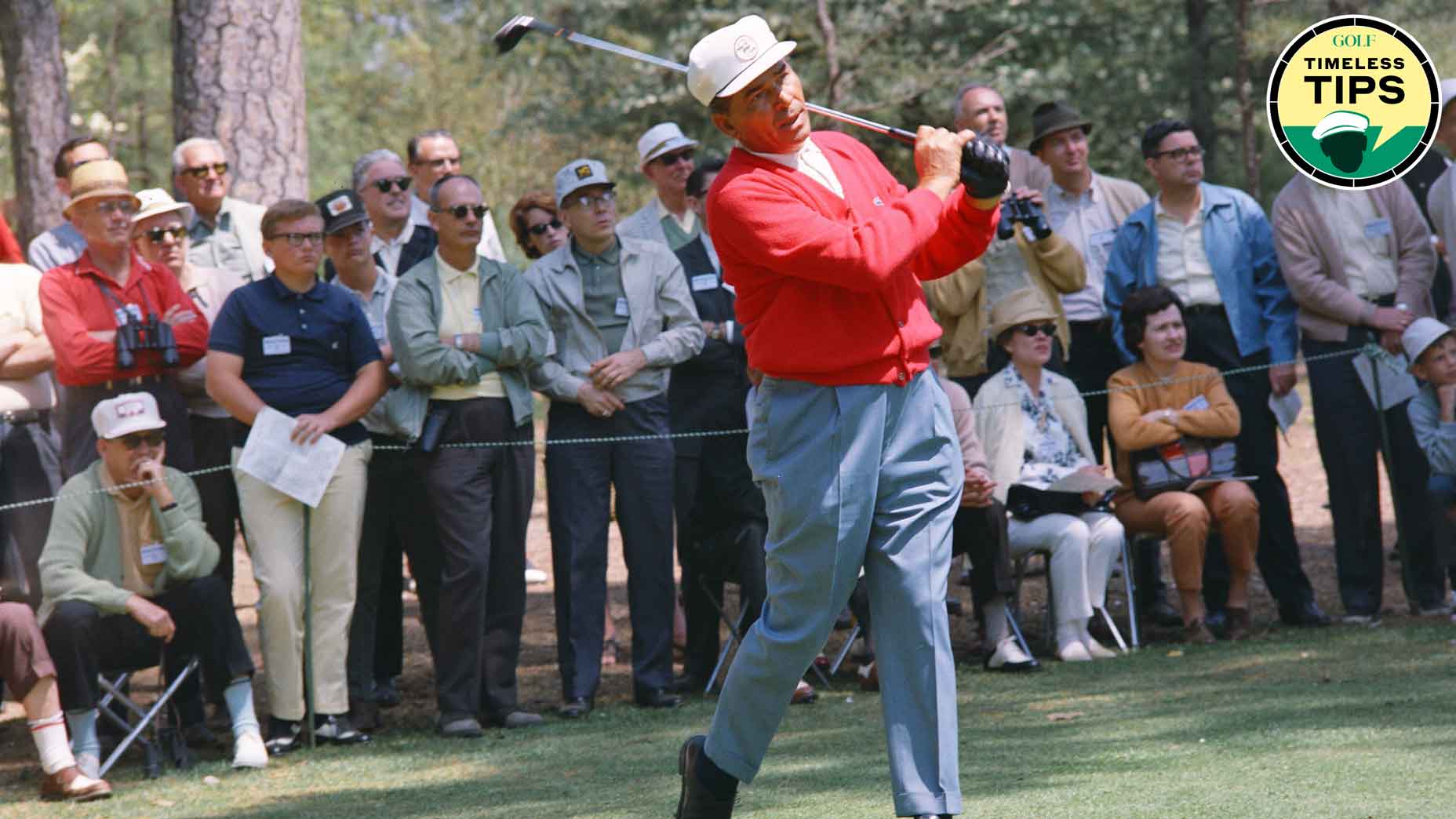
There’s no reason to let Father Time wreck your game, just follow these tips from three-time major-winner Julius Boros.
Getty Images
Golf instruction is ever-evolving, but the best advice stands the test of time. In GOLF.com’s new series, Timeless Tips, we’re highlighting some of the greatest advice teachers and players have dispensed in the pages of GOLF Magazine. Today we have some tips from Julius Boros on how to play solid golf as you age from the pages of our December 1967 issue. For unlimited access to the full GOLF Magazine digital archive, join InsideGOLF today; you’ll enjoy $140 of value for only $39.99/year.
Golf is a game that can be played for your entire life, but that doesn’t mean you’ll always play it well. In fact, if you don’t take the necessary steps, your game could abandon you as you age.
That wasn’t the case for Julius Boros. In 1968, he became the oldest-ever major winner (he was eventually surpassed by Phil Mickelson) as he won the PGA Championship at the age of 48. He later was a pioneer on the Champions Tour and continued to play high-level golf well into his 50s.
It’s unlikely you’ll be competing with the best in the world in your 50s like Boros did, but that doesn’t mean your golf game can’t age gracefully. Back in 1967, Boros joined GOLF Magazine and shared his best tips for playing solid golf as you age, which you can read below.
Boros’ tips for solid golf as you age
How come, the man wanted to know, that at 47 and getting awfully close to another year older you’re playing better than ever? Well, it is the truth. I’ll be 48 in March and yet my 18th year on the professional Tour was the sweetest financially I’ve ever known. Winning at Phoenix, Orlando and then the Buick Open gave me as many victories as I’ve ever posted in one year and such is the affluent state of the pro circuit these days that I won’t have to write home about it. Uncle will write to me, or maybe even send a limousine. So I’ll try to explain it and maybe help some of you other “old folks” in the process.
The fact is that I am playing better and driving farther than I have in years. One very important reason is that physically I’ve felt better than I have in a long, long time and I can swing easily without sharp pains sending shooting stars all through my body.
Of course there are other contributing factors that have made this particular “old man’s” year productive in a game full of hard-hitting youngsters. These are the things that may be helpful to some of you who are slowly losing the battle of the waistline bulge, finding the five pars stretching into six pars, arriving at the green gasping for breath and wondering at the final putt if it’s all worth while.
If I had to sum it up, I’d say that if Father Time is gaining on you there are five ways in which to help yourself:
1. Firm up your hands and arms.
2. Help yourself to a bigger turn with more and quicker left-side action.
3. Concentrate on anchoring your head to maintain good balance.
4. Strive for more hand speed through the ball.
5. And slow your entire tempo when you are at the ball.
My own successes this year are due in great part to a combination of these factors, although, as I pointed out, much is due to the fact that I am physically better off. For three years, starting in 1959, I had bursitis in both shoulders and then for another long period beginning in 1964, suffered from the same thing in both elbows and one shoulder. Once these were cleared up, I was naturally able to swing more freely.
Lee Trevino’s secret to lower scores — without making swing changesBy: Zephyr Melton
However, as we arrive in the middle years, there are a number of mechanical methods we can apply to help us play as well as ever, if not better. One of the major faults into which we fall, I think, is that the grip gets too loose. So the first thing you must watch is that the left hand is square to the ball and firm so that it doesn’t turn over when power is applied by the right. Firm hands and arms will prevent the bad habit of the hands leading the clubhead on the takeaway and closing the clubface at the top of the swing.
Keeping the wrists straight and firm during the first few feet the clubhead moves away from the ball will eliminate this clubhead drag. This maintains the desired straight alignment of the left arm and club shaft and the hands will then cock gradually on the backswing.
Personally, I feel that my downswing begins with a pulling down of my left hand and arm toward the ground. But almost simultaneously the hips must shift to the left so that you can get your left side out of the way and apply your full power. Working that left side permits you the freedom to turn back through the ball, and quick action here — while keeping your swing grooved by anchoring your head — will develop your power.
Now when I say “quick action” in getting your left side out of the way, I don’t mean that you jump at the ball. But if you’ll concentrate on head position while working on that body shift, you’ll soon find that it is a relatively simple move that greases your swing.
Holding your head position, you will find, keeps your body from moving forward during the swing and actually increases the whipping action of the clubhead when you do apply your power. It stands to reason that if your body is steady behind the ball at impact, your clubhead will be driven forward faster than if you were stripping it of power by moving forward with it.
One of the most common faults among the average golfers is this lunging at the ball on the downswing. You don’t hit the ball with your body. You hit it with your hands, with the head and body remaining steady to generate full power.
I have been told that I give the impression of “lazying” through the ball. Certainly this is a false impression. I do strive for a smooth, easy, controlled swing. But I do drive my hands through the impact area as quickly as I can.
There is a definite hitting area that extends from two feet behind the ball to one foot past the ball. It is in this area that you desire the maximum hand speed possible while still maintaining your rhythm and balance. It is, actually, that simple. The secret, in essence, is to keep the head and body steady through that impact area while allowing the hands to lash at the ball with every bit of power at their command.
Fred Couples explains his key for generating effortless powerBy: Zephyr Melton
Certainly the hands should continue moving low toward the target for a split second after impact, but this is not something you tack on to your swing. Such action is merely the net result of a good backswing and downswing.
Now if your hands are rising abruptly after impact, it’s because your head and body probably are moving away from target on the downswing. The causes here are failure to shift the weight to the left side along with the probability that you are not returning your right elbow to the right side on your downswing.
So bear in mind to make that quick, smooth weight shift to the left side as you pull down with your left hand and arm to start your downswing. Return your right elbow to the right side, keep your head steady behind the ball to brace your left side, hang on firmly with your left hand and lash through with the right. All of this will, actually, enable you to delay your hit until the proper moment — when your hands come into the hitting area and your speed throws the clubhead through the ball in those last two feet.
It will be a tremendous aid to you in applying this hand power and help you increase your hand speed if you will make a determined effort to slow the rhythm and tempo of your play. I am amused when I hear people say that I play completely relaxed and unconcerned. Let me say right here that I feel the pressure just like everyone else. Possibly I manage to conceal it more than most of the others. But it’s there. But the greater the pressure the more I attempt to slow my tempo so that I won’t rush or jump at a shot.
Such an effort is particularly vital as we grow older, since we are more likely to come apart at the seams. So as the years pile up, it’s a good idea to slow down when you are at the shot. In other words, I don’t mean that you should dawdle along when you are walking from one shot to another. When I play, it may appear that I am nonchalantly strolling along without a care in the world. Actually, I walk at a fairly brisk pace even though it has the appearance of being unhurried. I save my time by sizing up the shot ahead of me as I approach the ball and by the time I have arrived, in most cases, I know exactly what club I intend to hit.
Now is the time to fall into what I refer to as my pre-swing pattern, a deliberate process of thought and action that will provide me with a coordinated, unhurried swing. Personally I prefer not to take a practice swing, simply because it tends to interfere with my pattern. What I want is steady, deliberate attention to the process of taking a smooth, rhythmic swing at the shot in hand.
Thus I place the clubhead behind the ball with my feet close together, feet perpendicular to the line of flight and my hips turned slightly to the left. Next I widen my stance my moving first the left and then the right foot. Then I concentrate on a smooth, tension-free backswing and a controlled return to the ball. And I make certain never to rush my backswing, having learned years ago that the ball isn’t going to move away until I’ve hit it.
Gary Player: Stop making this mistake and start hitting more fairwaysBy: Zephyr Melton
With all the hue and cry about slow play, I don’t want you to think that I am advocating a snail’s pace as you walk from one shot to another. Actually you can save a great deal of time merely by judging your shot as. you approach it and then getting on with the business at hand. As Gene Sarazen once said: “Miss em quick.” For there is too much time lost in being indecisive about what club should be used and in studying various shots. I have found that usually your first decision as to what club you should use is your best.
On the other hand, I don’t feel that you should play your shot until you are physically and mentally ready, and the physical aspect is of vast importance for those in the middle years. Let’s say that you have just walked up a steep hill or, for some reason or other have accelerated your normal pace to the point where you are breathing much more heavily than usual. Certainly when you are gasping for breath you aren’t going to be able to attain the smooth, unhurried swing you desire. In such cases it certainly is wise to step back and wait the few moments necessary to return your pulse rate to normal. You must be composed to avoid a fast, jerky or over-anxious swing.
All of which may be of some assistance if you’ll give it a try. I know one “old fellow” it’s helped. Me.
Latest In Instruction

Zephyr Melton
Golf.com Editor
Zephyr Melton is an assistant editor for GOLF.com where he spends his days blogging, producing and editing. Prior to joining the team at GOLF, he attended the University of Texas followed by stops with the Texas Golf Association, Team USA, the Green Bay Packers and the PGA Tour. He assists on all things instruction and covers amateur and women’s golf. He can be reached at zephyr_melton@golf.com.

